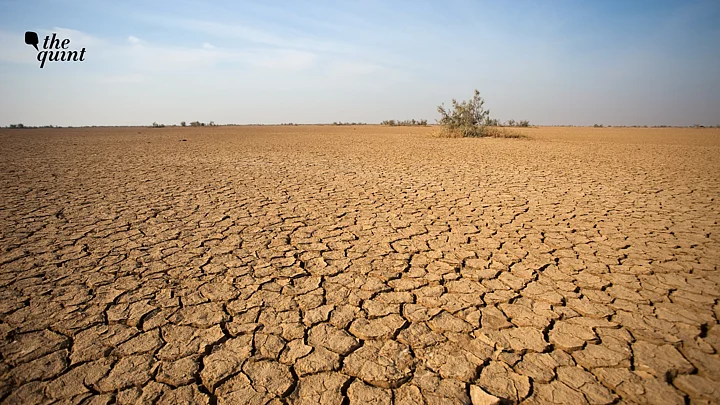“Asia is warming faster than the global average. The warming trend has nearly doubled since the 1961–1990 period.”
This is what the World Meteorological Organization’s (WMO) State of the Climate in Asia 2023 report, published on Tuesday, 23 April, says.
The report also states that Asia was the “world’s most disaster-hit region” due to climate events in 2023. As many as 79 hydrometeorological hazard events were reported in Asia the same year.
Over 2,000 people died due to these climate disasters, and close to nine million people were affected.
The Quint breaks down the key findings of the report for you.
Key Findings of the Report
The WMO, in the 2023 report, found:
Heatwaves became more severe in Asia in 2023.
Heat-related deaths were underreported.
Close to 80 percent of the extreme weather events were floods and storms that led to the most number of deaths and financial losses.
Droughts occurred in Southwest China nearly every month in the last year.
At least 20 out of 22 glaciers in Asia had “continued mass loss," and snow cover extent in Asia reduced in 2023 from the 1998-2020 average.
Sea surfaces in Asia are warming “more than three times faster than the globally averaged sea surface temperature.”
Marine heat waves, spanning several months, were observed.
“The annual mean near-surface temperature over Asia in 2023 was the second highest on record, 0.91 °C [0.84 °C–0.96 °C] above the 1991–2020 average and 1.87 °C [1.81 °C–1.92 °C] above the 1961– 1990 average.”State of the Climate in Asia 2023 report
Speaking to The Quint about the report, Dr Vishwas Chitale, Senior Programme Lead, Council on Energy, Environment & Water (CEEW), said, "The report underscores a worrying trend we're seeing across Asia. These extreme climate events like floods, cyclones and heatwaves, if not met with proper preparedness and policies, have the potential to cause loss of life and economic hardship. This vulnerability highlights the urgent need for a multi-pronged approach to rapidly accelerating climate change."
Zooming In on India
Highlighting the reality of climate change in India, the report stated that:
Severe heat waves from April-June led to at least 110 deaths in the country.
Even as rains in the summer-monsoon were below average in India, floods and storms from July-August “resulted in more than 600 reported deaths across India, Pakistan, and Nepal.”
As many as six tropical cyclones occurred in the Indian subcontinent, causing widespread destruction across regions.
The sea level rise in Bay of Bengal in 2023 was the second-highest in the region, “30 percent above the global average.”
The rise in temperatures most affected the northern and eastern regions of India.
The WMO further added, “In India, Yemen, and Pakistan, floods were the natural hazard event which caused the greatest number of fatalities.”
The Quint had reported in June 2023 that close to 68 people in Uttar Pradesh’s Ballia and 53 people in Deoria succumbed to heat-related deaths.
In October the same year, the South Lhonak Glacial Lake in Sikkim had burst, which led to the Teesta river flooding and wreaking havoc across four districts in the state – killing more than 40, and causing significant economic loss.
Dr Chitale said, "Research shows the need for strengthening critical infrastructure – healthcare, transportation, and power grids – through climate-proofing measures. Upgrading standards and building codes with the changing climate in mind is essential. Additionally, we cannot ignore the rising heat stress in our cities."
What Next?
After the report was released, WMO Secretary-General Celeste Saulo said,
“Many countries in the region experienced their hottest year on record in 2023, along with a barrage of extreme conditions, from droughts and heatwaves to floods and storms. Climate change exacerbated the frequency and severity of such events.”
Armida Salsiah Alisjahbana, Executive Secretary of the Economic and Social Commission for Asia and the Pacific (ESCAP), an organisation that was also involved in bringing out the report, emphasised on how “vulnerable countries were disproportionately impacted,” like Bangladesh and Myanmar that were hit by cyclone Mocha.
The researchers suggest, “There is an urgent need to advance efforts and provide more tailored support and services to address strategies and interventions to effectively mitigate rising disaster risks.”
